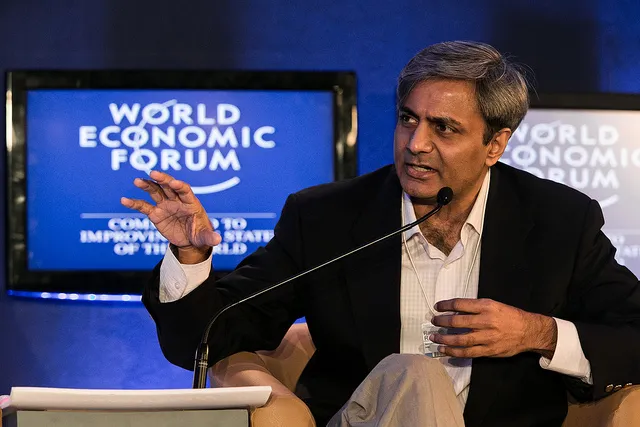From 'kurta-pyjama' to 'suit-boot': The evolution of the social sector professionals
The past decade has been an encouraging growth story for social entrepreneurship in India, with a rapidly growing microfinance industry (albeit till the Andhra Pradesh crisis) and new and evolving business models in other sectors such as agriculture, education, healthcare, and livelihoods. India continues to provide a huge platform for social entrepreneurs to innovate, prove, and scale their ideas, given the vast socio-economic inequalities that pose complex market problems, governments’ lack of effectiveness at addressing these issues, and the large population at the base of the pyramid.
Rush of talent into the social sector

The major catalyst for this growth has been the influx of skilled and professional social entrepreneurs – be it a Ramesh Ramanathan, a veteran banker who quit Citibank (heading a $100 million business) to work for the urban development in India, or a youngster like Dhruv Lakhra, who quit his investment banking job to work for the disabled community. These entrepreneurs, as Bill Drayton (Founder, Ashoka) once said, “(they) are not content by giving a fish or teaching how to fish. They will not rest until they have revolutionized the entire fishing industry”.
So what inspired these professionals to invest time, money, effort, and much more into a sector which was erstwhile unapparent?
At the risk of generalising, one of the key events bringing public attention to the social space was Muhammadd Yunus and Grameen Bank winning the Nobel Peace Prize for pioneering microcredit services. This gave several entrepreneurs a proven model to base their initiatives on. The Grameen Bank model itself, via replication and fine tuning by counterparts in other countries, went on to create a rapidly growing global industry in the social space.
However, Grameen Bank wasn’t the first successful model for rural intervention. For instance, Dr. Kurien’s role in scaling up Amul, in as early as 1970s, did provide a successful model for venturing into the social space; but few entrepreneurs drew inspiration from the same then. Why then are there more takers for the Grameen model vs. the Amul model?

Image Credit : Mid-day
The answer to the same lies in our country’s own growth story. Amul’s success came during a time when India was still struggling to find its foothold in the world economic map. However, since the reforms in the 90s and the growth of service industries over the past two decades, Indian economy has significantly developed. The burgeoning middle class now meets most of their basic needs, allowing them to focus on larger social issues, in line with Maslow’s hierarchy.
Experienced professionals and young graduates can now afford to identify themselves as the change agents of society and realise the intellectual satisfaction that comes out of innovating solutions to complex business problems in the social space.
It is encouraging to see that this trend is not restricted to entrepreneurship alone. Several social enterprises are now able to attract top class professionals into their senior and second level management team. This has come due to several key changes in these years, across the academic and professional spectrum.
Academia embraces social entrepreneurship
Most business schools now have a thriving social entrepreneurship program that nurtures talent and also helps them connect to the industry through various immersion programmes. From the Harvard Business School’s Social Enterprise Initiative to INDEVOR, INSEAD, the best of the B schools in the world have proactively built a social sector practice. They not only have a separate course work and programmes focused on social initiatives, schools also integrate “social benefits” as a key part of their curricula. As per one of the HBR articles on “The Rise of Social Entrepreneurship in B-Schools in Three Charts” it is said that Yale School of Management has social benefit incorporated in over 95% of its course content.
Premier schools in India too have developed programmes in the social space. Programmes like the MA in Social Entrepreneurship, TISS, have been in existence for years now and business schools like the IIMs have structurally integrated social sector facets into their course content.
Social sector is now pregnant with ample career opportunities
The sector also has multiple institutions providing fellowship programmes that help professionals acquaint with the social sector. Standalone fellowship programmes like the Teach For India and IDEX, and investor run fellowship programmes, primarily aimed at their portfolio companies, have helped provide a platform for professionals from India and abroad, to contribute to the social sector. Some of the most active fellowship programmes are the ones run by Lok Capital and Acumen Fund – identifying experienced professionals who can work with social enterprises in highly impactful positions.

More importantly, there is no longer a dearth of attractive long term career opportunities in the space – thanks to the growth and institutionalisation of the sector, with the involvement of institutional investors and advisors, demanding social enterprises to have robust systems and processes under a strong management team, rather than being a solely promoter/ visionary driven organisation. With improved funding and institutionalisation, the organisations are also able to provide attractive remunerations and a strong career path, making a switch to social entrepreneurship not just about giving back to society, but also a viable career option.
About the author:

Arun Asok is a social sector professional currently heading a business unit for a highly innovative social enterprise. With a keen interest in inclusive businesses, post his graduation from IIM A, Arun worked extensively in the impact investment space – investing and managing companies across sectors such as low cost education, affordable healthcare, financial inclusion, etc.Disclaimer: The views and opinions expressed in this article are those of the author and do not necessarily reflect the views of YourStory.
Also read: Three Seminal Works in the Social Sector: A Beginners Guide for Social Sector Aspirants







